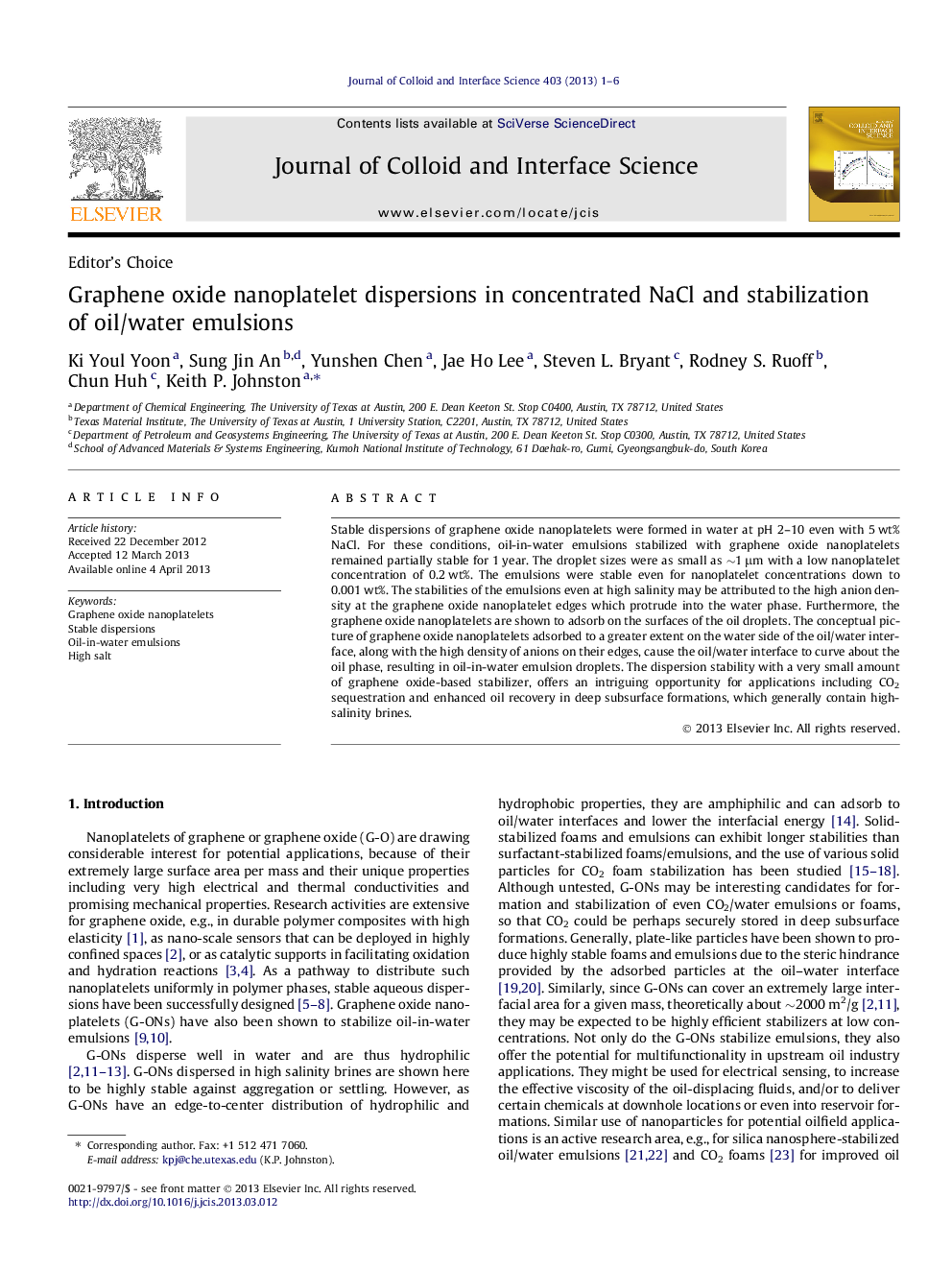| Article ID | Journal | Published Year | Pages | File Type |
|---|---|---|---|---|
| 607676 | Journal of Colloid and Interface Science | 2013 | 6 Pages |
•Stable dispersions of graphene oxide nanoplatelets at pH 2–10 even with 5 wt% NaCl.•Oil-in-water emulsions with 0.2 wt% graphene oxide nanoplatelets.•The stabilities of the emulsions even at high salinity.
Stable dispersions of graphene oxide nanoplatelets were formed in water at pH 2–10 even with 5 wt% NaCl. For these conditions, oil-in-water emulsions stabilized with graphene oxide nanoplatelets remained partially stable for 1 year. The droplet sizes were as small as ∼1 μm with a low nanoplatelet concentration of 0.2 wt%. The emulsions were stable even for nanoplatelet concentrations down to 0.001 wt%. The stabilities of the emulsions even at high salinity may be attributed to the high anion density at the graphene oxide nanoplatelet edges which protrude into the water phase. Furthermore, the graphene oxide nanoplatelets are shown to adsorb on the surfaces of the oil droplets. The conceptual picture of graphene oxide nanoplatelets adsorbed to a greater extent on the water side of the oil/water interface, along with the high density of anions on their edges, cause the oil/water interface to curve about the oil phase, resulting in oil-in-water emulsion droplets. The dispersion stability with a very small amount of graphene oxide-based stabilizer, offers an intriguing opportunity for applications including CO2 sequestration and enhanced oil recovery in deep subsurface formations, which generally contain high-salinity brines.
Graphical abstractFigure optionsDownload full-size imageDownload high-quality image (68 K)Download as PowerPoint slide
